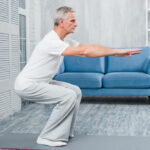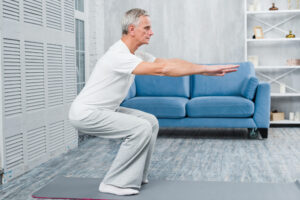Sauna use has been a cornerstone of wellness and fitness cultures around the world for centuries. Originating from Finland, the practice of sitting in a high-temperature room to sweat out toxins has gained global recognition. This article dives into the multifaceted health benefits of sauna use, especially in the context of enhancing fitness routines.
The science behind sauna benefits
Saunas operate by creating an environment with dry or wet heat, causing the body to sweat and increase its core temperature. This process mimics the effects of mild exercise, stimulating the cardiovascular system.
The heat exposure from saunas initiates several physiological changes, including increased heart rate and widened blood vessels, enhancing blood flow throughout the body.
Core Health Benefits
Let’s explore the most popular health benefits that a sauna may bring you.
Enhanced cardiovascular health
Regular sauna use has been linked to a lower risk of heart disease. The heat improves circulation, similar to the effects of moderate exercise, reducing blood pressure and increasing heart rate.
Improved muscle recovery
Heat therapy from saunas can alleviate muscle soreness and improve recovery times after intense workouts. It aids in the relaxation of muscles and increases blood circulation, facilitating the healing process.
Detoxification through sweat
Sweating in a sauna can help flush toxins from the body. Though the body naturally detoxifies through the liver and kidneys, sweating enhances this process, removing heavy metals and other toxins through the skin.
Stress reduction and mental health
The relaxing environment of a sauna can significantly reduce stress levels. The heat relaxes muscles, improves circulation, and releases endorphins, creating a soothing effect on the mind.
Best practices for sauna use
Here are two tips on how to safely incorporate a sauna into your fitness routine:
- Pre-sauna preparation: Staying hydrated before entering a sauna is crucial to avoid dehydration. It’s also recommended to limit the intake of heavy meals and alcohol.
- Post-sauna recovery: After a sauna session, cooling down gradually and rehydrating is essential to replenish lost fluids and prevent dizziness.
Learn more about myths, facts, and benefits of sauna after workout.
Potential Risks and How to Mitigate
Understanding the signs of overheating and dehydration can help mitigate risks. It’s important to listen to your body and exit the sauna if feeling dizzy or uncomfortable.
Individual tolerance varies, so starting with shorter sessions and gradually increasing the duration can help avoid adverse effects.
The different types of saunas
When it comes to enhancing our wellness and fitness routines, saunas are a versatile tool, offering a variety of experiences tailored to individual preferences and health goals.
Traditional vs. Infrared saunas
- Traditional saunas: These saunas heat the air around you, typically using wood, electric, or gas heaters. The temperature in a traditional sauna can reach up to 185-195 degrees Fahrenheit, creating a hot and humid environment that encourages profuse sweating. This method of heating allows for a deeper detoxification process, as the high heat and humidity open pores and flush out toxins effectively.
- Infrared saunas: In contrast, infrared saunas do not heat the air around you. Instead, they use infrared panels to directly warm your body. This type of sauna operates at a lower temperature, usually between 120-150 degrees Fahrenheit, making it a gentler option that can be more comfortable for people with heat sensitivity. The direct heat penetration into the muscles and tissues provides a soothing effect, aiding in muscle recovery and relaxation without the intense heat of traditional saunas.
Steam rooms (Turkish baths)
Another popular type is the steam room, often referred to as a Turkish bath. Steam rooms differ from traditional saunas in that they provide a wet heat experience with very high humidity and lower temperatures. The moist heat is excellent for respiratory health, helping to clear airways, and is also beneficial for hydrating the skin.
How to maximize benefits
Stay hydrated before, during, and after
- Pre-sauna hydration: Drink at least one glass of water before entering the sauna. This preps your body for the fluid loss that occurs through sweating.
- Hydration during the sauna: For longer sessions, consider bringing water into the sauna to maintain hydration levels. However, listen to your body and avoid overconsumption that could lead to discomfort.
- Post-sauna rehydration: After exiting, rehydrate with water or electrolyte-rich drinks to replenish lost fluids and minerals. This aids in recovery and helps prevent dehydration-related issues.
- Wear appropriate attire
- Breathable fabrics: Opt for loose, lightweight, and breathable fabrics like cotton to allow your skin to breathe and sweat freely. Avoid synthetic materials that can trap heat and hinder the sweating process.
- Minimal clothing: Less clothing is generally better in a sauna, as it allows for an even distribution of heat and maximizes the detoxification process through sweating. A towel or bathing suit is often sufficient.
- Footwear considerations: In communal saunas, wear flip-flops or shower shoes to protect your feet from hot surfaces and maintain hygiene.
- Time your sauna sessions wisely
- Duration: Start with shorter sessions (5-10 minutes) and gradually increase the duration as your body adapts, up to 15-20 minutes. Listen to your body’s cues to avoid overheating.
- Frequency: Regular use is key to accruing benefits. Aim for 3-4 times a week, adjusting based on how your body responds and your overall health goals.
- Post-exercise: Incorporating sauna sessions after workouts can enhance muscle recovery by promoting blood circulation and reducing muscle soreness.
- Cool down properly
- Gradual cooling: After leaving the sauna, allow your body to cool down gradually. A cool shower can accelerate the cooling process but start with lukewarm water to avoid shocking your system.
- Rest: Take time to rest and relax after a sauna session. This helps your body stabilize and enhances the stress-relieving benefits of sauna use.
Final thoughts
Sauna use is a beneficial addition to any fitness regimen, offering a wide range of health benefits from improved cardiovascular health to stress reduction. By following best practices and understanding personal limits, individuals can safely incorporate sauna sessions into their wellness routines.
If you want to experience how a sauna can work with your fitness routine, claim your 3-day free pass at HiTone Fitness South Congaree and try it for free.







